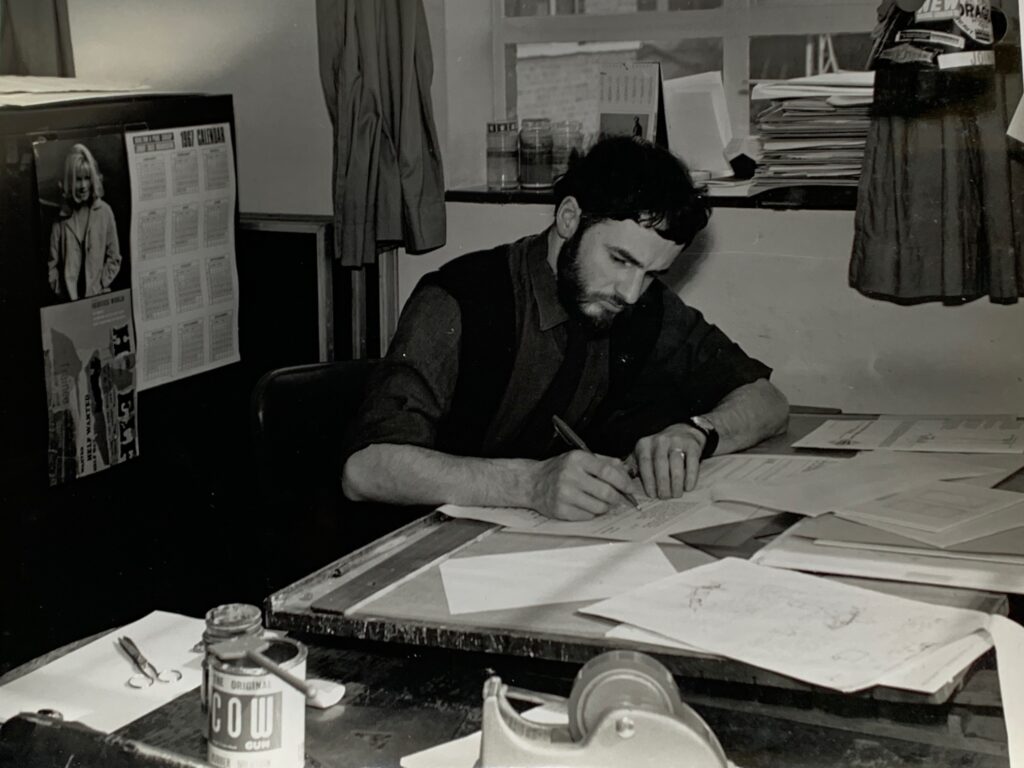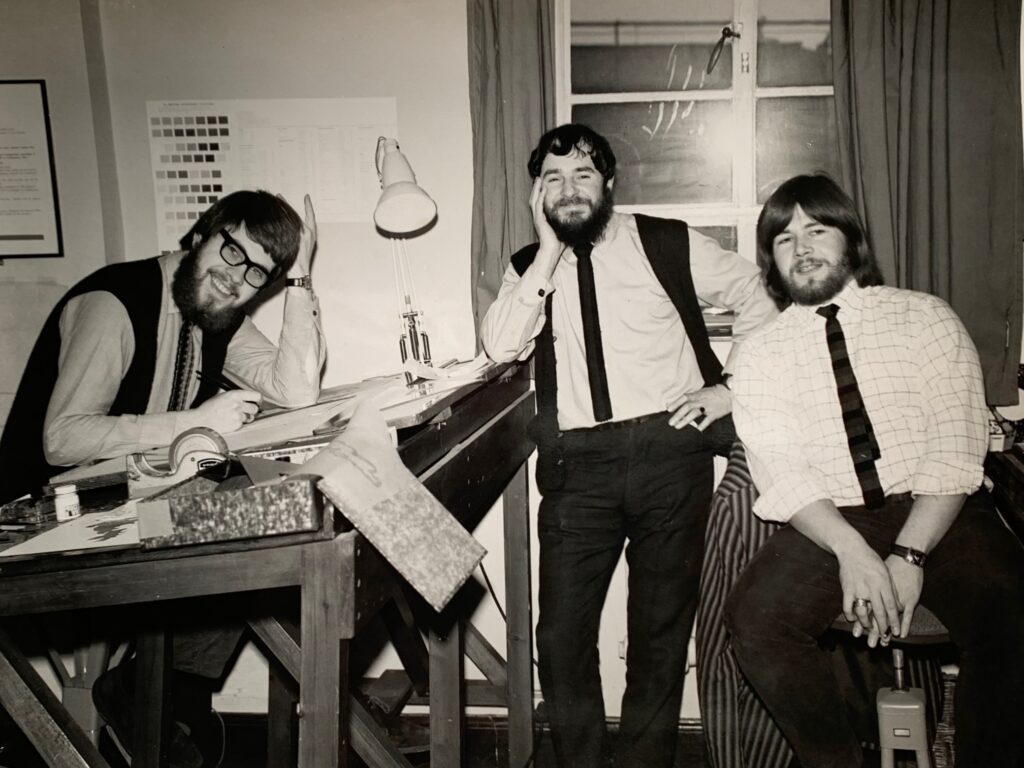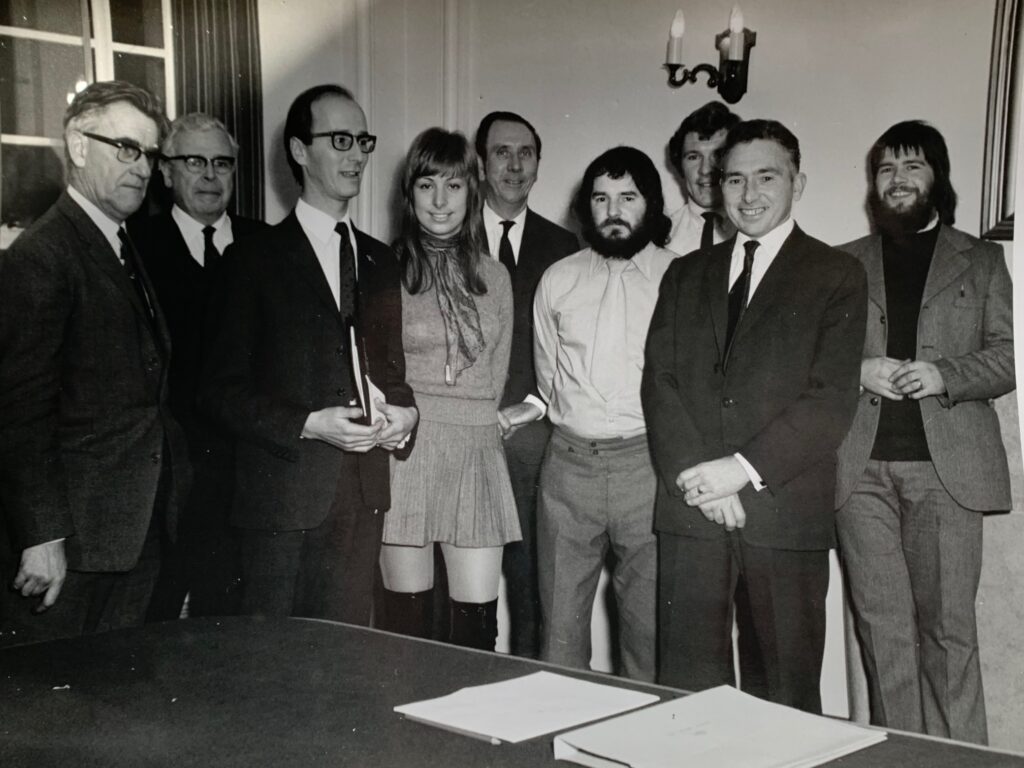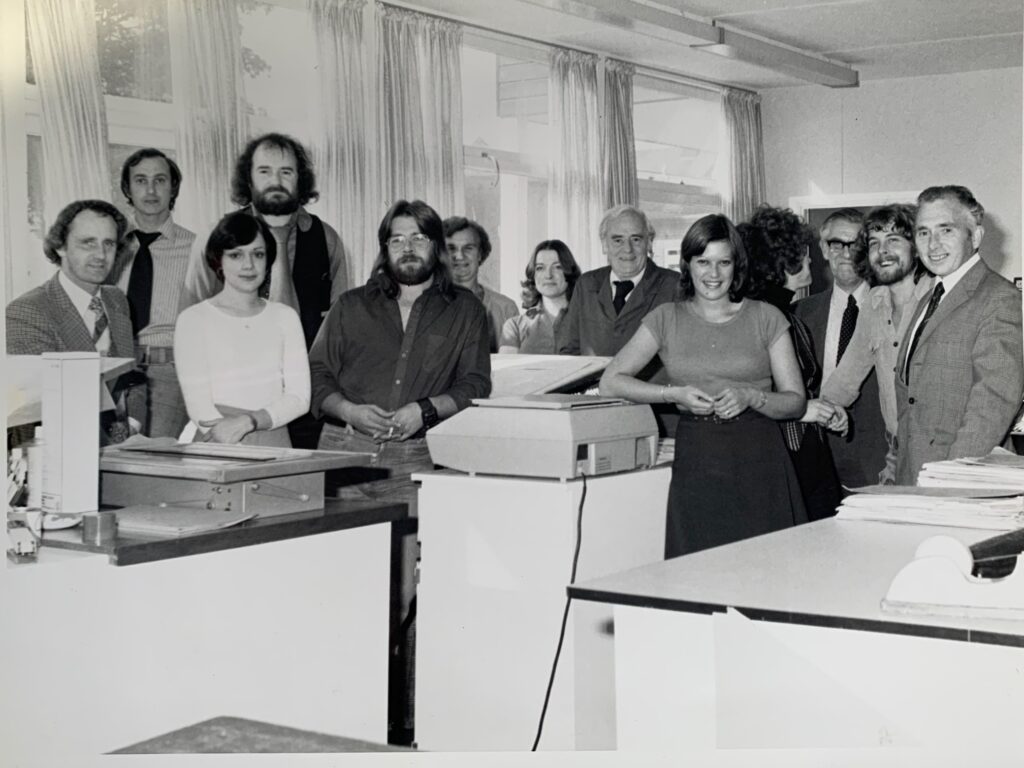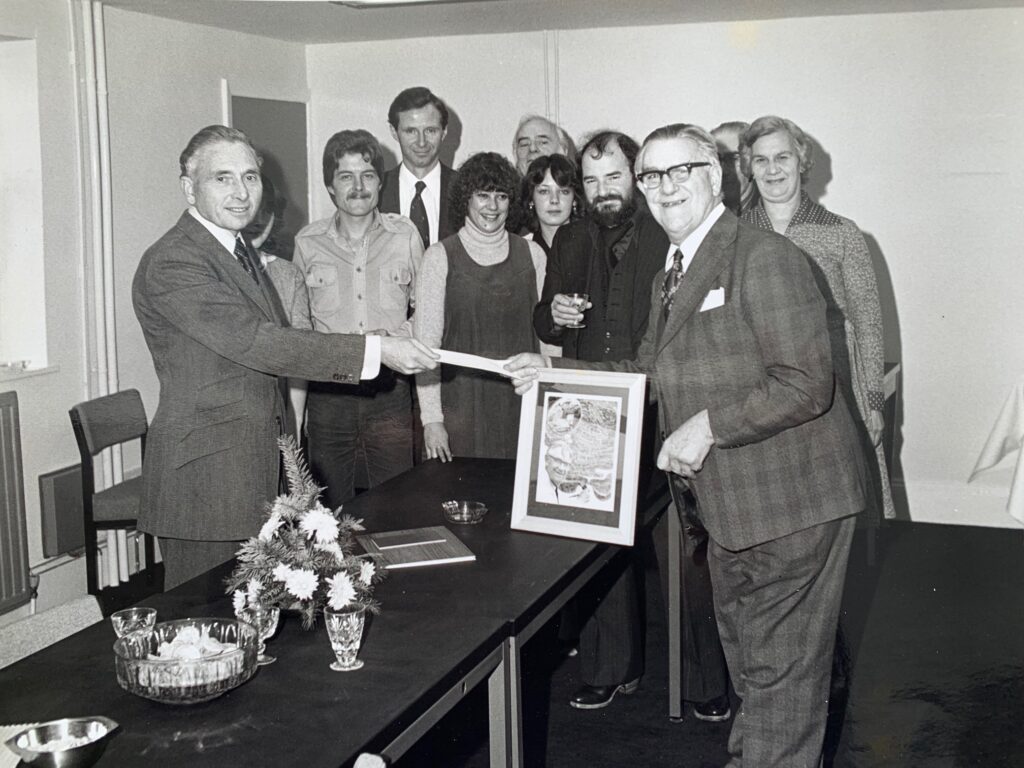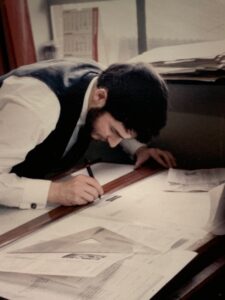John worked for Boulton and Paul for 34 years between 1961 and 95. He is a well-known print-maker and artist.
Boulton and Paul – start on Monday
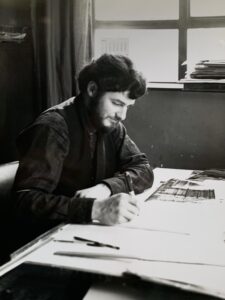
Boulton & Paul (Riverside, Norwich) in the 1960s.
I went to Norwich Art School for four years and then went as far as Bury St Edmunds to do two years in the army on National Service. Not very far, wild country that! Then I worked for a few months for Garlands clothing shop in London Street but I was made redundant from there mainly because I couldn’t spell; they got fed up with counting the mistakes in the window displays. I used to go into a little coffee bar in London Street, long gone now, and and see what jobs there were in the paper. I saw a job at Boulton and Paul in the advertising department. I’d done graphic design when I was at art school, so I wrote to them. I was called in for an interview on the same Friday, got a message back in the afternoon, could I start on Monday? And that was it. I was there for thirty four years.
When I left I said that was a shame, I was just getting the hang of things.
When I first joined I went in as someone working in the studio. I think the first thing I did was a drawing of scaffold fitting because the photograph hadn’t come out. I spent ages on that using charcoal and ink. I thought, ‘Why didn’t they just rephotograph it?’ The drawing eventually went into a catalogue Then I was into the thick of catalogues, flyers. We did virtually everything from the lettering in a pencil to a tiny notice that went on the lock of a garage door, right up to big exhibition stands. This was not just for Boulton and Paul, but for the companies that were part of the group as well.
Scaffold fitting was for Stevens and Carter – scaffolding ladders and steps and all that kind of things. Boulton and Paul were steel work: netting and fencing, joinery, mechanical engineering, the whole bit. We did work for all the departments including the head office, the parent company. Things like annual reports which you had to be very careful not to let anyone see, it was all undercover stuff.
Cut and paste!
If it was something to be printed then we were working on it. As my daughter said to point out, it was all cut and paste. Now cut and paste means you’re moving one thing on a computer to another area, whereas then it actually was cut and paste. You were using a scalpel to chop up the little bits of type and gluing to boxes or whatever was required.
I escaped working with computers. I was made redundant before a computer arrived on my desk, which suited me ideally. I still don’t use a computer and it doesn’t agree with me. Some people were using them and we had funny incidents like the director who complained that he needed a longer lead on his mouse because he hadn’t got the knack of stroking it to make it go further. He couldn’t get the thing where he wanted I on his desk. But we forgave him because [laughs] he was new to computers as well. So you know, we had a bit of fun.
The last of the Pauls – weights and measures
In the department was the last of the Pauls, Jack Paul, the son of the last Boulton and Paul owner of the company, who had sold out. I believe Jack had had polio as a youngster so there was an arrangement that he would always have a job with the company. He worked in advertising, marketing, publicity, or what whoever was on top fancied having as a department.
Jack worked on exhibition stands and show stands, things like Smithfield Show. Work on farm buildings brought us into the agricultural world. Jack did a drawing once and said the scale was, ‘half inch to the metre’. Everything was changing at that time. We had windows that were an imperial size but we had to do a metric equivalent. It was some time before we brought in a metric range and there was straightforward metric, no imperial measurements included.
Any changes involved more labels, more brochures and more leaflets, more bits and pieces. One time they brought in the fact that you had to know what weight every product was, part of health and safety. So every window, every door, had a label on saying what it was as well as how much it weighed.
We didn’t have to go and weigh the product to check. We took what we were given as the weight and created the necessary paperwork, label or whatever was required, we didn’t have to [laughs] lift everything.
Every day was different, you couldn’t be bored. Really we were artists. I had a team working with me, so we were up for a bit of a laugh and enjoyed ourselves.
Promotion, redundancy, and back
I hadn’t been there very long before I moved up into the studio manager position after the chap doing it went to Massey Ferguson. After several years they made us all redundant. I was redundant on the Friday and back in on the Monday They were putting work out to agencies and other people and they needed someone to co-ordinate it. I did ask if I could still have the redundancy money but apparently not [laughs]. I’d only been out on the Saturday and Sunday so…
Over the period that I was there I didn’t just work at Riverside. We moved to a purpose built studio and building in the grounds of the aluminium window factory on Eversley Road. Then we moved down into Pottergate to a building at the side of Ten Bells Lane, that comes up from St Benedicts. Later on we were back to Riverside in various places and then at the end we were off the Salhouse Road, so lots of moves. And each time we did a layout for how we could fit everybody in. As someone in the History Boys by Alan Bennett, said when asked what history: ‘It’s one f-ing thing after another’. You just got on with things.
I liked Pottergate although it cost me a lot of money! I’m a book fanatic so it meant that I was released into the city lunchtimes to buy things [laughs] whereas off the Cromer Road at Eversley Road I didn’t have that chance to go anywhere.
Boulton and Paul vs print-making
Some jobs were boring such as creating forms by ruling it all up, not computerised, and sticking little bits of lettering in and then it’d be printed. But working on some of the leaflets, the brochures, new products, was interesting. I mean some of the Stevens and Carter products like the cradles that go up and down on the buildings were interesting. There were hundreds of windows in different ranges, different sizes, opened in different ways, or didn’t open or whatever Then no two days were the same.
At Boulton and Paul, working in advertising, publicity, marketing, was good. You made friends with the people you worked with, you socialised with some of them, some you didn’t!
During all the time that I was at Boulton and Paul I was doing my own work in the evenings and weekends, which was print making – lino cutting. Thar is what I’ve been doing for the almost thirty years since I was made redundant. I’ve almost had as long a retirement as I had a working period, so I’ve been very luck really.
And I’m still hanging on you know [laughter] still exhibiting, still cutting.
Boulton and Paul didn’t actually pay a great deal, but they kept paying and I didn’t want to leave to do the print making. It was like an incentive [laughs] – the print making might not have been regular. You know it’s pretty good at the moment because people think that I’m gonna die so they better get one, you know [laughter] you never know. But it’s a good life still.
John Jackson (b. 1938) talking to WISEArchive in The Forum, Norwich on 22nd March 2024. © 2024 WISEArchive. All Rights Reserved
Boulton and Paul photo gallery, courtesy John Jackson
